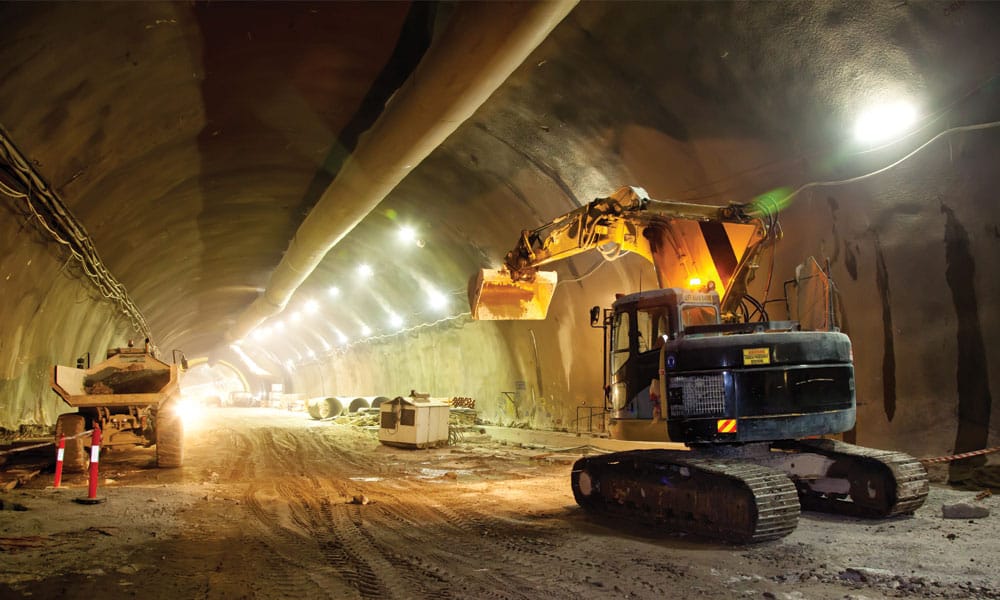Navigating Geotechnical Solutions: The Importance of Geotechnical Information, Soil Compaction Testing, and Sidewalk Style in Ensuring Structural Integrity
In the realm of engineering and building and construction, the foundation upon which a structure is constructed plays a pivotal duty in its durability and security. Geotechnical services, including the production of geotechnical records, performing dirt compaction screening, and thorough sidewalk layout, work as the foundation of ensuring structural honesty. These crucial parts not just prepared for effective project implementation yet also mitigate potential dangers that can endanger the stability and sturdiness of a building task. As we look into the elaborate interaction in between geotechnical evaluation and architectural strength, the vital nature of these services in securing versus unanticipated difficulties becomes increasingly evident.
Significance of Geotechnical Records
Geotechnical records play a vital function in supplying comprehensive insights right into the dirt and rock conditions of a website, vital for ensuring the structural integrity of construction tasks. These records are a fundamental element of the preliminary site investigation process, offering useful details that influences the layout, building and construction techniques, and overall expediency of a project. By evaluating dirt composition, security, and prospective threats such as landslides or sinkholes, geotechnical records make it possible for engineers to make enlightened choices regarding foundation layout and building and construction techniques.
Moreover, geotechnical records help in risk analysis and reduction methods, aiding project stakeholders comprehend the possible difficulties that may arise throughout building and construction. Via comprehensive assessment and interpretation of geotechnical data, engineers can develop options to resolve site-specific issues, guaranteeing the long-lasting stability and security of the structure. Eventually, the detailed nature of geotechnical records serves as an important foundation for effective task planning and execution, reducing threats and boosting overall job outcomes.

Role of Dirt Compaction Screening
Just how important is the analysis of dirt compaction with testing for making sure the security and longevity of building jobs? Dirt compaction testing plays an important role in the construction industry by making sure that the dirt under a framework is correctly compressed to support the intended load and avoid settlement (geotheta). Effectively compressed dirt provides a secure structure for structures, roadways, and other structures, lowering the risk of architectural failure and costly repair services in the future
Dirt compaction testing entails determining the density of the dirt and contrasting it to the optimum density possible for that particular soil kind. If the dirt has been compressed sufficiently to sustain the scheduled framework, this helps designers figure out. By performing soil compaction tests throughout building, designers can identify any locations that need additional compaction and take restorative steps prior to proceeding with additional building.
Relevance of Pavement Design
Examining dirt compaction with screening not only guarantees the stability and longevity of building and construction projects however additionally lays More Bonuses a crucial structure for reliable sidewalk design. Correct pavement style considers aspects such as website traffic tons, environmental conditions, soil attributes, and product residential properties to produce a robust and sustainable surface. By integrating information from dirt compaction examinations, designers can determine the ideal thickness, materials, and layering for the sidewalk to endure awaited anxieties and keep architectural stability over time.
Making Sure Structural Integrity
These records provide essential info on soil composition, security, and potential dangers, aiding in informed decision-making during the layout and building stages. Furthermore, carrying out comprehensive soil compaction testing is crucial to guarantee that the soil below sidewalks or foundations is properly compressed to support the intended loads and avoid settlement concerns.
Furthermore, implementing robust sidewalk design practices is necessary for ensuring the structural honesty of roadways, car park whole lots, and various other smooth surfaces. Appropriate sidewalk style takes into consideration useful reference factors such as web traffic quantity, ecological problems, and soil characteristics to produce safe and long lasting transportation facilities. By adhering to these techniques and using geotechnical solutions successfully, building and construction tasks can enhance their architectural honesty, decrease dangers of failing, and make certain the long-term performance of the constructed atmosphere.
Protecting Versus Risks
In light of the essential relevance placed on ensuring architectural integrity with thorough interest to product option and dirt testing, protecting against dangers comes to be critical in preserving the security and long life of construction projects. Threats in building tasks can stem from different resources, consisting of all-natural catastrophes, dirt instability, or design imperfections.
Furthermore, establishing backup strategies and applying durable tracking systems can help mitigate unanticipated dangers that might arise during building and construction. Normal inspections and quality assurance actions need to be performed to guarantee that materials are made use of based on specs which construction techniques stick to industry criteria. By proactively identifying and addressing potential dangers, building and construction jobs can boost their durability and lessen the possibility of architectural failings, inevitably making sure the security and durability of the constructed setting.
Conclusion

Dirt compaction testing plays a crucial duty in the building sector by guaranteeing that the dirt under a structure is appropriately compressed to protect against and sustain the desired tons settlement.Dirt compaction screening includes measuring the density of the dirt and comparing it to the optimum density achievable for that certain dirt kind (geotheta). By carrying out dirt compaction tests throughout building, engineers can determine any type of areas that require extra compaction and take corrective procedures before continuing with further building and construction
In addition, carrying out complete soil compaction testing is essential to make certain that the soil underneath foundations or sidewalks is correctly compressed to support the designated tons and protect against settlement issues.
In conclusion, geotechnical reports, soil compaction screening, and pavement design play vital duties in ensuring the structural integrity of building and construction tasks.